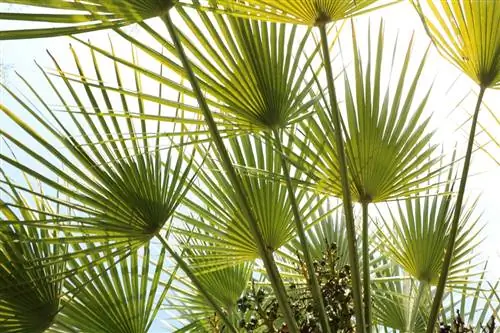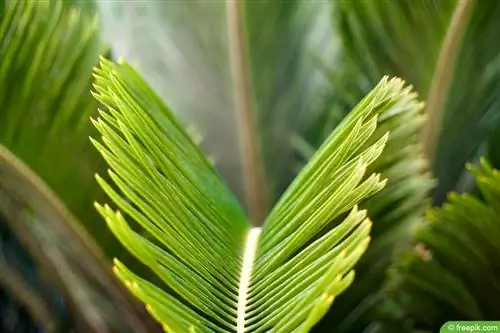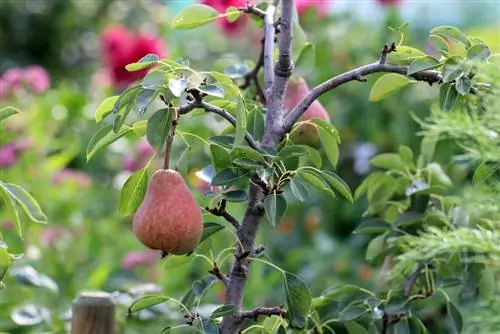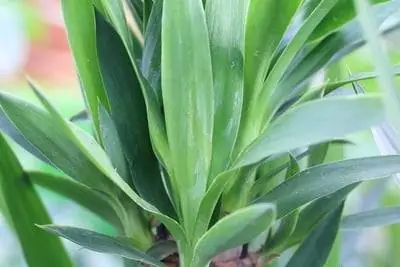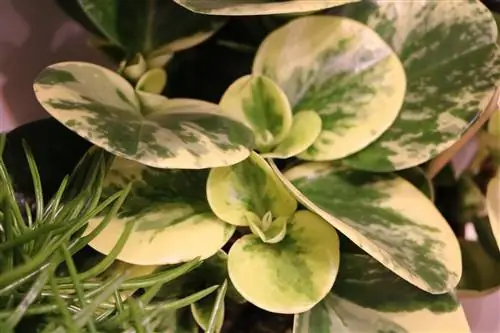- Author admin [email protected].
- Public 2023-12-17 03:39.
- Last modified 2025-01-24 12:45.
The dwarf palm is well suited as a houseplant that brings some exotic flair into the home. Below you will find care instructions that provide everything you need to know about the plant.
Profile
- Botanical name: Chamaerops humilis
- Origin: Mediterranean region
- Plant type: houseplant, also for terrace or winter garden
- Height: up to 2 m
- Growth: multi-stemmed, dense
- Leaves: green to blue-green fans
- Flowers: yellow panicles
- Flowering time: April to June
- Use: good as a single plant in a bright corner of the room
- Winter hardiness: not hardy
Location
The Chamaerops humilis requires a sunny location, but it also tolerates slightly shady places. In the house, a larger corner of the room between two windows is suitable. High humidity is an advantage; if the air is too dry, the tips of the leaves dry out.
It is easier to give the plant a place in the garden, on the balcony or on the terrace in summer. It is often sunny enough there. The right location outside should always be protected from the wind so that the plant cannot fall over in strong winds.
Note:
Since the palm tree gets very large, you should keep in mind that it could quickly get in the way in the house and then be difficult to move.
Substrate
In nature, the dwarf palm grows in dry, stony locations. It therefore prefers sandy to gravelly soil as a substrate. Normal potting soil should definitely be expanded with sand, expanded clay or gravel. Ideally it is slightly sour. It is also important to have an open drain hole in the pot.
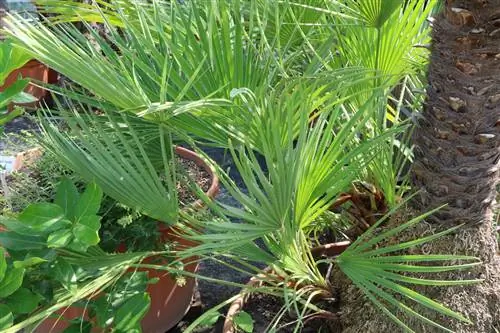
Planting and repotting
If you buy a new dwarf palm, you should definitely check whether the pot you bought is still big enough for the plant. Many houseplants grow in pots that are too small and have to be repotted immediately after purchase to prevent them from dying. The actual repotting of the dwarf palm is rarely necessary because it only grows slowly. Only every few years does the plant become too big for its pot. The roots then grow out. Repotting instructions:
- choose larger pot
- heavy pot gives the plant better support, alternatively fill larger stones into the pot
- Cover the extraction hole loosely
- Mix the substrate and fill it halfway into the pot
- Removing the palm tree from the old pot
- Check roots and prune if necessary
- Put the plant in the new pot
- Fill in the substrate and press it on
- water well
Pouring
During the growth phase in summer, the palm tree needs regular water. The soil must not dry out and must be thoroughly moistened every time it is watered. Nevertheless, under no circumstances should waterlogging occur. This could lead to root rot.
Fertilize
The plant needs a lot of nutrients for he althy growth, especially in summer. A liquid green fertilizer is well suited, which is then simply administered once a week via the irrigation water. There is no need to fertilize in winter, or if so, only very rarely, as the palm then hibernates and hardly uses any nutrients.
Cutting
Basically, the Chamaerops humilis does not need to be cut. It naturally grows very compact and dense. However, dried out leaf fronds can be removed. This is best done after the winter break. Should a severe pest infestation occur, the relevant areas can be cut out of the plant.
Wintering
Since the dwarf palm is not hardy, it inevitably has to overwinter indoors. It can be grown outdoors from about May (after the last frosts) to the beginning of October.
Tips for wintering:
- be sure to put away before the first frost
- choose a bright, airy, cool place in the house
- optimal temperatures between 5 and 10 degrees
- water little, do not fertilize
- check regularly for pests
- Cleaning out the plant in spring
- Watering and fertilizing more frequently again
- slowly get used to the outdoors after overwintering
- choose a shady spot initially
Note:
A palm tree that is cared for exclusively indoors does not necessarily have to move to another location in the winter.
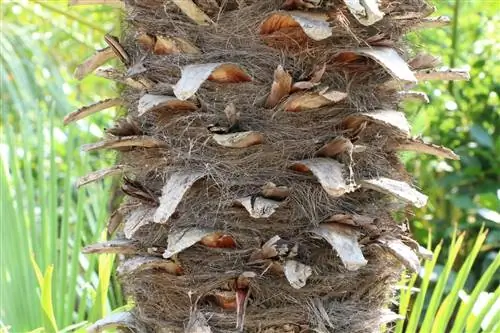
Propagate
If you want to propagate the dwarf palm, you have the choice between two options, depending on the age of your plant. On the one hand, older palms sometimes form daughter plants that can easily be separated and planted separately and on the other hand, seed heads form after flowering from which seeds can be obtained for new plants.
However, propagation via seeds requires a lot of patience, as the plant not only takes a long time to germinate, but also to grow. Quick guide:
- Keep seeds dry
- Pour sowing soil into a shallow bowl and moisten it
- Spread the seeds thinly
- cover with soil and moisten again
- Cover the bowl loosely with foil
- place warm and bright, but not too sunny
- Keep soil moist
- Germination sometimes takes months, so be sure to use soil without weed seeds
- single after germination and plant in your own pots
Diseases and pests
Diseases hardly ever occur in the dwarf palm. Pest infestations occur when the keeping conditions are not entirely right. Air that is too dry can lead to spider mite infestation. Frequent spraying with water helps. Lice can also appear; these can be washed off with a light lye solution and permanently eliminated. Chamaerops humilis is much less susceptible outdoors. It is best to take plants affected by pests outside, as the pest problem will usually resolve itself.

